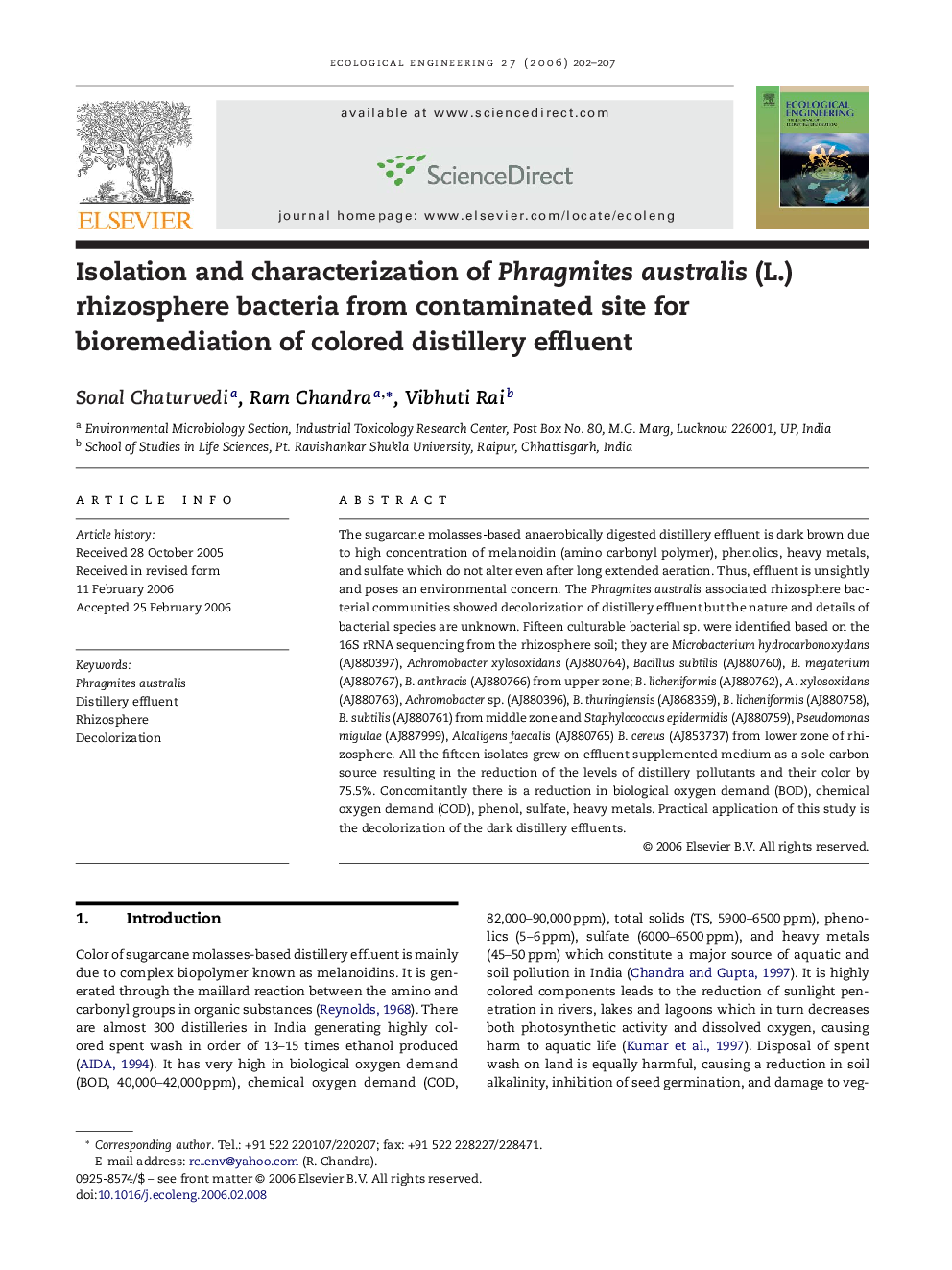| Article ID | Journal | Published Year | Pages | File Type |
|---|---|---|---|---|
| 4391296 | Ecological Engineering | 2006 | 6 Pages |
Abstract
The sugarcane molasses-based anaerobically digested distillery effluent is dark brown due to high concentration of melanoidin (amino carbonyl polymer), phenolics, heavy metals, and sulfate which do not alter even after long extended aeration. Thus, effluent is unsightly and poses an environmental concern. The Phragmites australis associated rhizosphere bacterial communities showed decolorization of distillery effluent but the nature and details of bacterial species are unknown. Fifteen culturable bacterial sp. were identified based on the 16S rRNA sequencing from the rhizosphere soil; they are Microbacterium hydrocarbonoxydans (AJ880397), Achromobacter xylosoxidans (AJ880764), Bacillus subtilis (AJ880760), B. megaterium (AJ880767), B. anthracis (AJ880766) from upper zone; B. licheniformis (AJ880762), A. xylosoxidans (AJ880763), Achromobacter sp. (AJ880396), B. thuringiensis (AJ868359), B. licheniformis (AJ880758), B. subtilis (AJ880761) from middle zone and Staphylococcus epidermidis (AJ880759), Pseudomonas migulae (AJ887999), Alcaligens faecalis (AJ880765) B. cereus (AJ853737) from lower zone of rhizosphere. All the fifteen isolates grew on effluent supplemented medium as a sole carbon source resulting in the reduction of the levels of distillery pollutants and their color by 75.5%. Concomitantly there is a reduction in biological oxygen demand (BOD), chemical oxygen demand (COD), phenol, sulfate, heavy metals. Practical application of this study is the decolorization of the dark distillery effluents.
Related Topics
Life Sciences
Agricultural and Biological Sciences
Ecology, Evolution, Behavior and Systematics
Authors
Sonal Chaturvedi, Ram Chandra, Vibhuti Rai,
